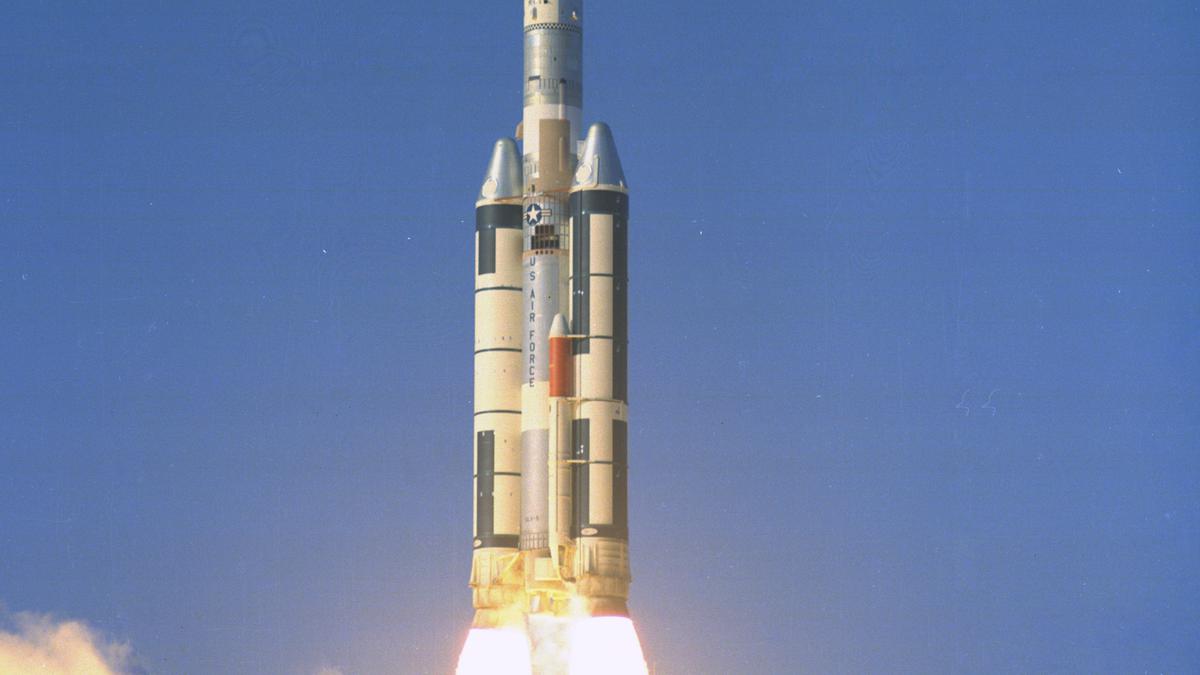
A powerful launcher called Titan IIIC
The Hindu
On June 18, 1965, the expendable launch system Titan IIIC flew for the first time. Used by the U.S. Air Force and NASA from 1965 to 1982, Titan IIIC was a powerful launcher. A.S.Ganesh tells you more about this rocket…
Do you know what an expendable launch system is? These are launch vehicles that can be launched only once. This means that the components are either destroyed during re-entry or are discarded in space after launch.
Also called expendable launch vehicles (ELVs), such systems usually contain several rocket stages. As the vehicle gains altitude and speed, these stages typically are sequentially discarded as and when their fuel is exhausted.
The Titan IIIC was one such ELV. Used majorly by the U.S. Air Force and also by NASA, the rocket consisted of modified liquid-fuel first and second stages with two lateral strap-on solid rockets to enhance boost at lift-off.
The Titan family of launch vehicles started off as a large intercontinental ballistic missile (ICBM) as the U.S. Air Force sought an ICBM that would surpass Atlas in terms of delivery capacity and sophistication. Just like the Atlas and Thor, Titan too evolved into an important family of space launch vehicles.
The development contract for what would become the Titan ICBM was issued in October 1955. It was named Titan as the name referred to any of the children of Uranus (Heaven) and Gaea (Earth) and their descendants in Greek mythology. The first Titan was test-launched on February 6, 1959, but Titan I wasn’t modified for spaceflight.
That first happened with Titan II, a more powerful version of Titan I. Tested successfully in March 1962, Titan II was declared operational in 1963. Initially modified as the Gemini-Titan II to be the launch vehicle of the crewed Gemini Project, it was then used to place satellites in orbit as well.
When there was a need for rockets that were capable of carrying heavier payloads than those handled by Atlas-Centaur, the Titan III family of launch vehicles were born. The Titan IIIA was a Titan II ICBM with an added third stage called transtage, which used twin Aerojet engines and burned Aerozine 50 and nitrogen tetroxide liquid fuel.

The Leela Palace Chennai presents the seven edition of Shefs at The Leela in collaboration with ‘Dean With Us’ — the mother-daughter duo of Rupali and Akansha Dean. The event honours the transformative role of Indian women chefs who are shaping the future of gastronomy. After past editions hosted across Bengaluru, Gurugram, Chennai, and Jaipur, the seventh edition in Chennai will bring together four women chefs — Sambhavi Joshi, Taiyaba Ali, Sehaj Ghuman and Bunuma Patagiri, who will bring their years of expertise into curating a menu that speaks both of their work and India’s diverse culinary heritage.





















 Run 3 Space | Play Space Running Game
Run 3 Space | Play Space Running Game Traffic Jam 3D | Online Racing Game
Traffic Jam 3D | Online Racing Game Duck Hunt | Play Old Classic Game
Duck Hunt | Play Old Classic Game










